Studio-Tested Techniques for Expressive Painting
Most articles about painting techniques read like art school textbooks - lots of theory, not much real studio experience. After sixteen years of daily painting, I've developed techniques that actually solve problems I encounter in my work, check them out!

Most articles about painting techniques read like art school textbooks - lots of theory, not much real studio experience. After sixteen years of daily painting, I've developed and refined techniques that actually solve problems I encounter in my work, not just methods that sound impressive in theory.
Here are the techniques I genuinely use and can recommend from authentic experience.
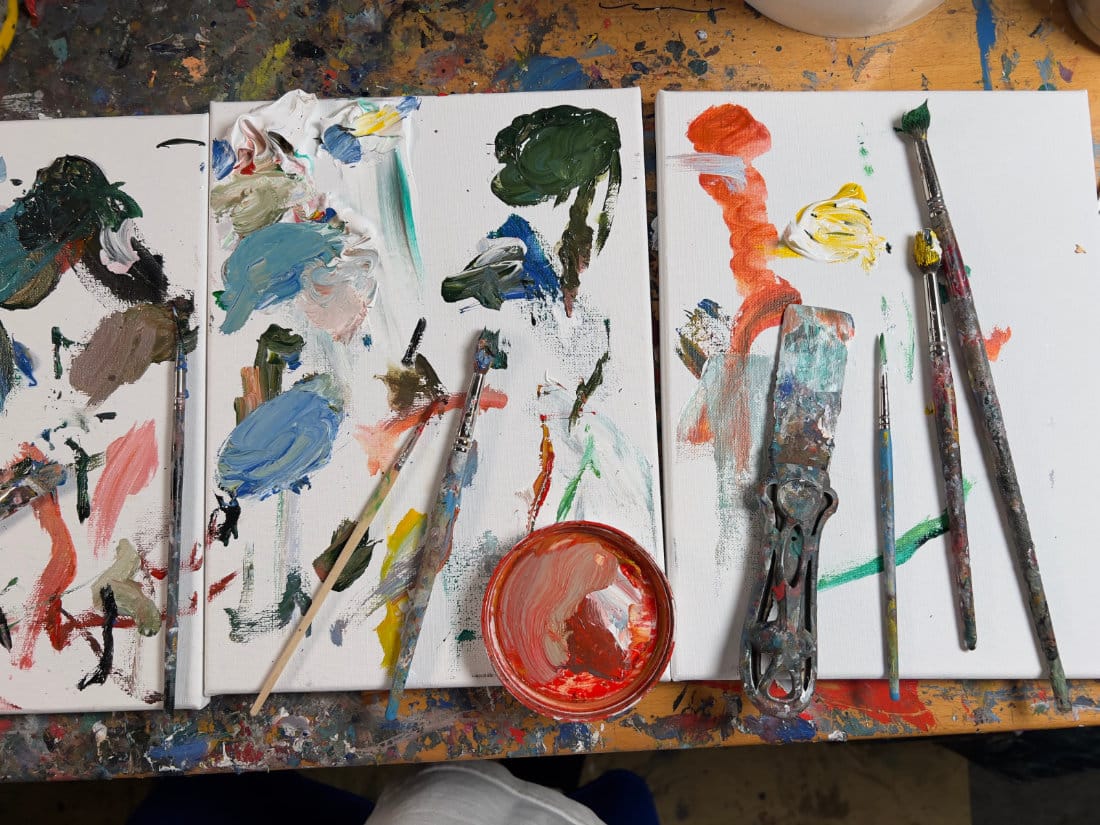
The Canvas-as-Palette Method
This technique emerged from necessity and resourcefulness, not from any art instruction manual. Instead of using a separate palette, I mix colors directly on my canvas. By the end of a painting session, you have random colors, spontaneous strokes, and unexpected marks already living on your surface.
Why it works: Every bit of mixed paint becomes part of the painting's foundation. You start your next session with an expressive beginning that's already broken the "precious canvas" barrier. The random color patches give you unexpected starting points and force you to respond rather than control.
When to use it: Perfect for expressive work where you want authentic color interactions. Not ideal if you need precise color matching or are working on commissioned portraits.
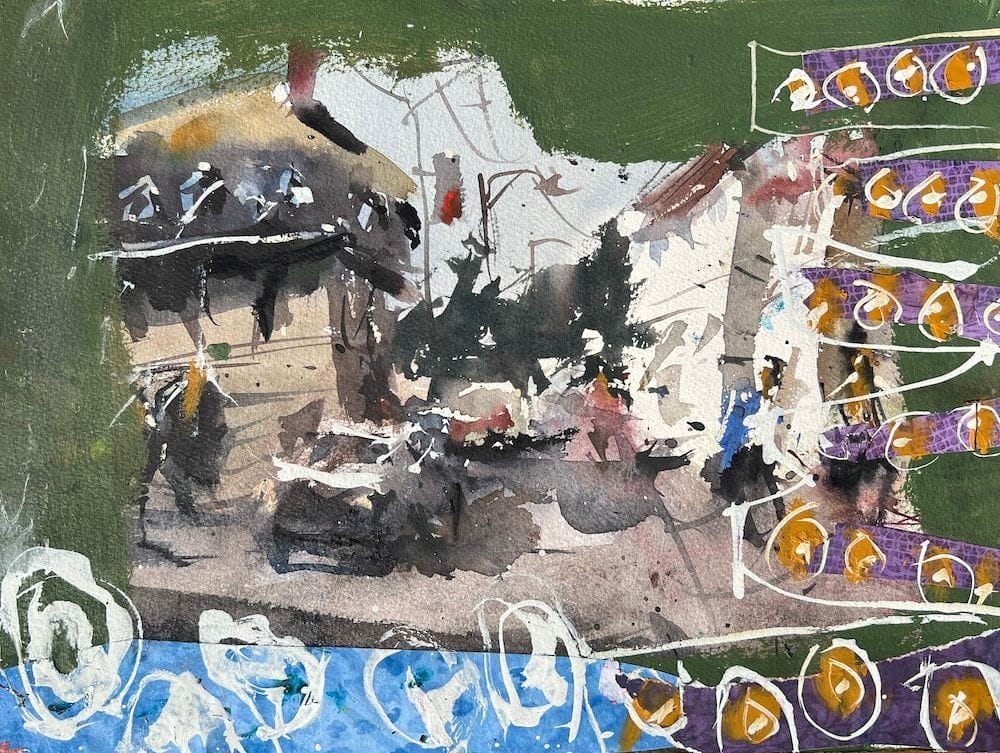
Working Over Painting Rejects
This technique came from being too stubborn (and too broke) to waste canvases. When a painting isn't working, I set it aside. Days or weeks later, I flip it upside down or rotate it 90 degrees and start painting something completely different over top.
The discovery: Those underlying marks and colors create interactions you'd never plan. The existing paint texture gives your brush something to react against. You're not starting from zero, so there's no blank canvas paralysis.
Practical benefits: It's resourceful, removes pressure, and prevents over-planning. The existing marks push you in new directions and create depth that's impossible to achieve in a single session.
Study the image above: This started as an inferior watercolor landscape that wasn't working. By adding collage elements, additional paint layers, and mixed media materials, the original 'failure' became the foundation for a more expressive and complex composition. The underlying landscape still informs the work but no longer dominates it.
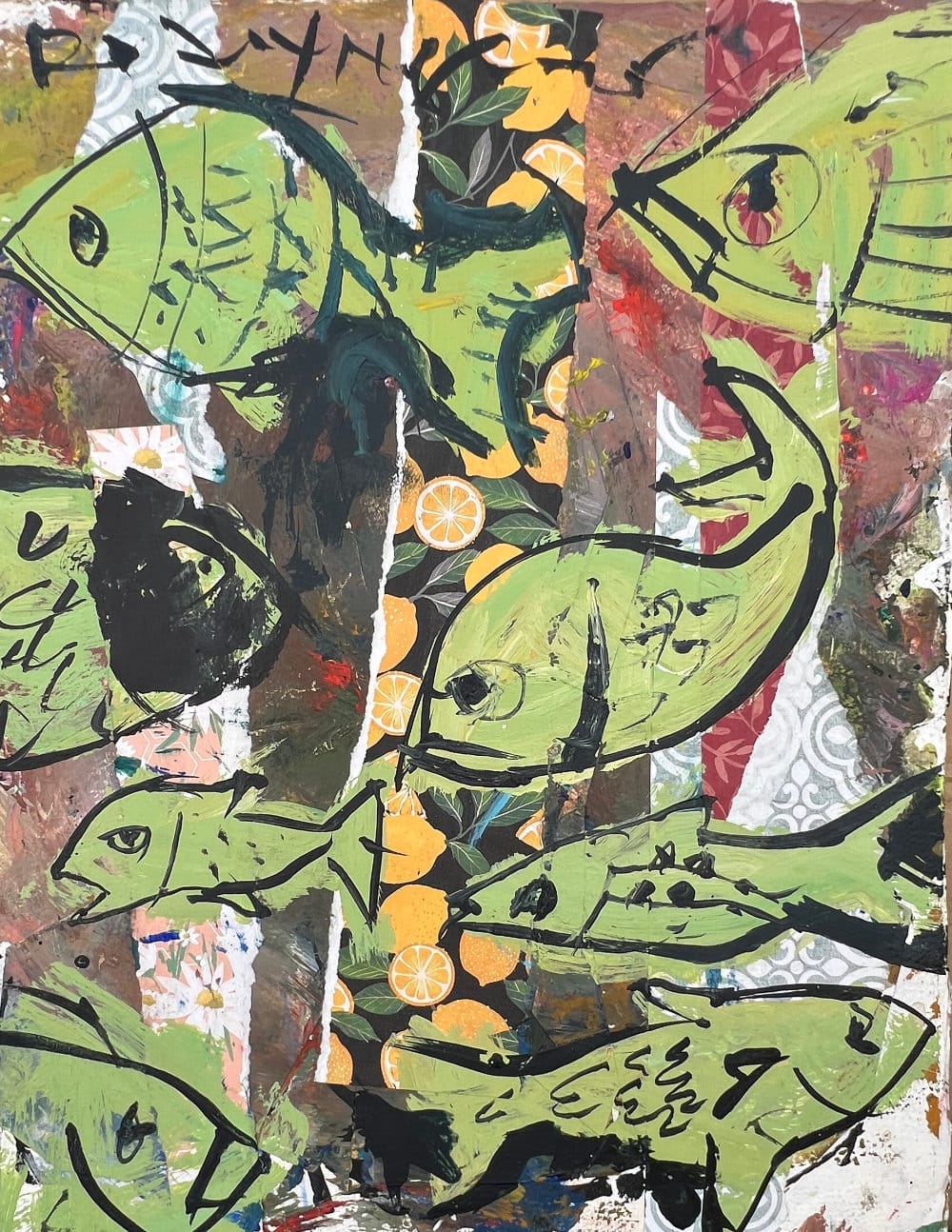
Strategic Collage Integration
I don't use collage for decoration - I use it to solve specific painting problems. Torn paper borders around edges, strips layered across surfaces, or texture elements that create visual interruptions all serve functional purposes.
The torn paper technique: Hand-torn (never cut) paper strips create organic edges that feel natural rather than designed. These elements force you to paint differently because you're working into, around, and over varied textures.
When it works best: Collage elements are most effective when they address a specific need - creating texture contrast, breaking up flat areas, or adding compositional complexity that pure paint can't achieve.
Study the image above: The collage elements here serve specific functions - creating texture contrast against the smooth fish forms, providing visual breaks that prevent monotony, and adding layers of pattern that couldn't be achieved with paint alone. Each collaged piece was placed to solve a compositional problem, not just to add interest.
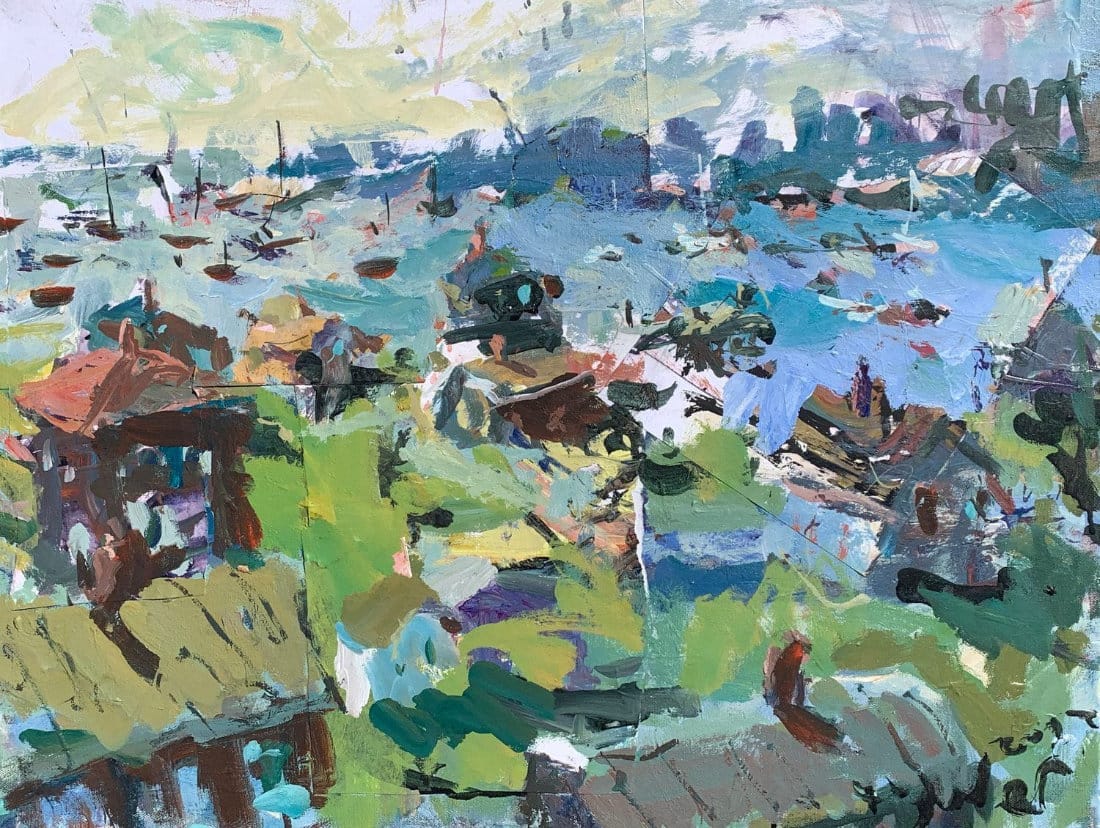
Layered Mixed Media Approach
My mixed media work isn't about using every material available - it's about strategic layering where each medium does what it does best. Watercolor for transparent washes, acrylics for opacity and texture, linear elements for definition.
The responsive process: Each layer responds to what came before. If the watercolor base creates unexpected color pools, the acrylic layer works with those accidents rather than covering them. Linear elements with crayon or marker go where they're needed for clarity or energy.
Material selection: I choose materials based on what the painting needs, not what looks impressive. Sometimes that's complex mixed media, sometimes it's just paint and determination.
Study the image above: Each layer in this harbor scene serves a specific purpose - watercolor for transparent atmospheric effects, acrylics for opacity and form-building, linear work for definition. The layers respond to what emerged before them rather than executing a predetermined mixed media plan. This responsive layering creates complexity that couldn't be achieved with any single medium.
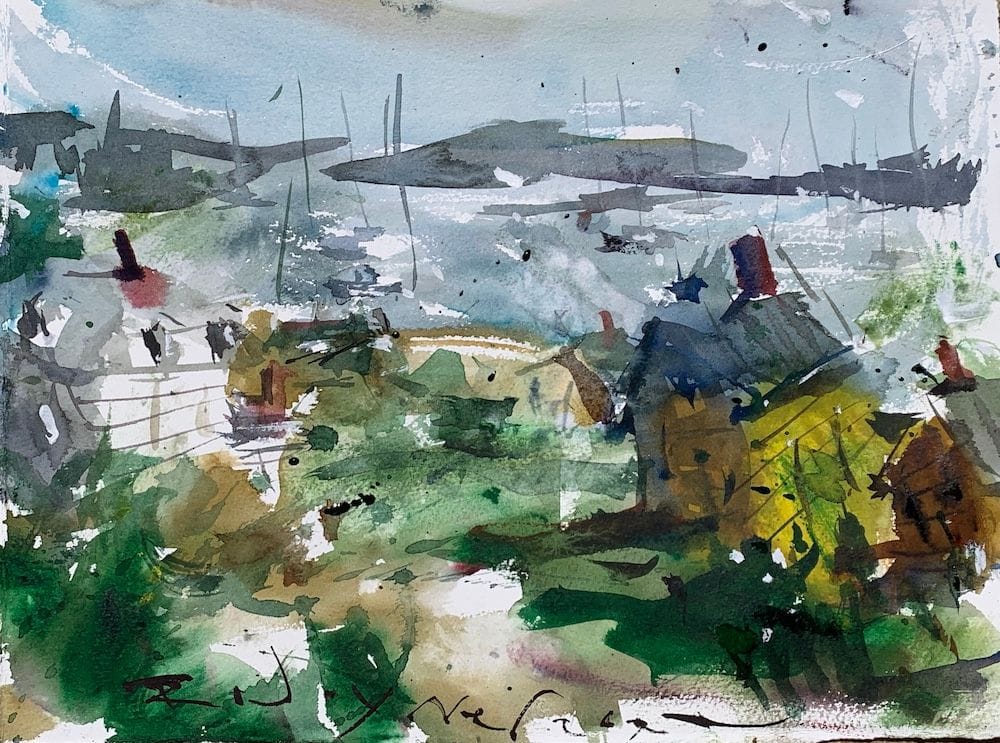
Controlled Accidents Through Water Management
Working with watercolor taught me to use water as a creative partner rather than fighting for complete control. Understanding timing - when paint is wet, damp, or dry - lets you create effects that look accidental but are actually guided.
Practical application: I'll intentionally drop clean water into damp paint areas to create blooms, or use a spray bottle to reactivate dry areas for blending. These aren't random actions - they're responses to what the painting needs.
Study the image above: This harbor scene shows controlled accidents in action - colors allowed to bloom and flow while still maintaining the basic structure of boats and buildings. The soft edges and organic color interactions were created by working with water timing rather than fighting for complete control. These 'happy accidents' create atmospheric effects impossible to achieve through careful brushwork.
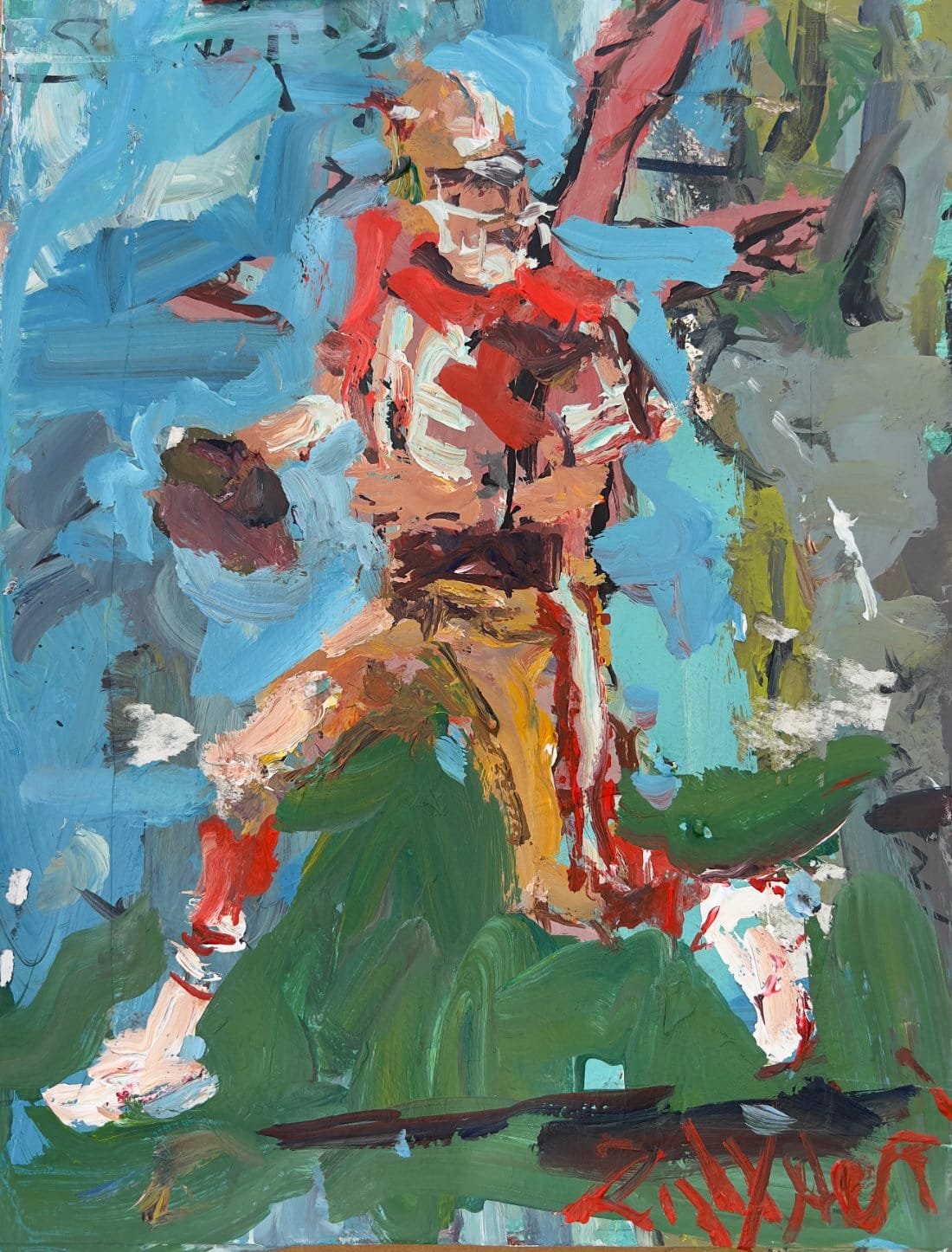
The Anti-Overblending Philosophy
This might be my most important technique: knowing when to stop working an area. Overblending kills the life in expressive work faster than any other mistake.
The practical approach: Put paint down, move it if needed, then leave it alone. Let colors exist as distinct entities rather than smoothing everything into uniform transitions. Those individual brushstrokes and color separations are the visual record of your authentic responses.
Study the image above: This figure shows the power of leaving brushstrokes alone - each mark of paint maintains its integrity and energy. The chunky, unblended brushwork creates life and authenticity that smooth transitions would destroy. You can see the artist's actual decision-making process in every color patch and paint application.
Why These Techniques Actually Work
Each of these methods emerged from solving real painting problems, not from trying to create impressive effects. They support the fundamental principle that expressive painting comes from authentic response to what's happening on your surface.
The canvas-as-palette method creates authentic starting conditions. Working over rejects removes precious attitudes. Strategic collage creates genuine textural problems to solve. Palette knives force confident mark-making. Layered mixed media builds complexity organically.
None of these techniques work in isolation - they're most effective when combined with solid drawing fundamentals and enough painting experience to make confident decisions quickly.
The Foundation That Enables Technique
Here's what most technique articles miss: methods only work when you have enough basic skill to use them effectively. Understanding color temperature, value relationships, and basic composition gives you the foundation to use these techniques expressively rather than just randomly.
Without that foundation, you're not using innovative techniques - you're just making effects without purpose.
Want drawing lessons? Visit the Free Drawing Tutorials & Courses hub
The most innovative painting techniques aren't the most complicated ones. They're the methods that solve real problems in your actual painting process and support authentic expression rather than impressive display.




